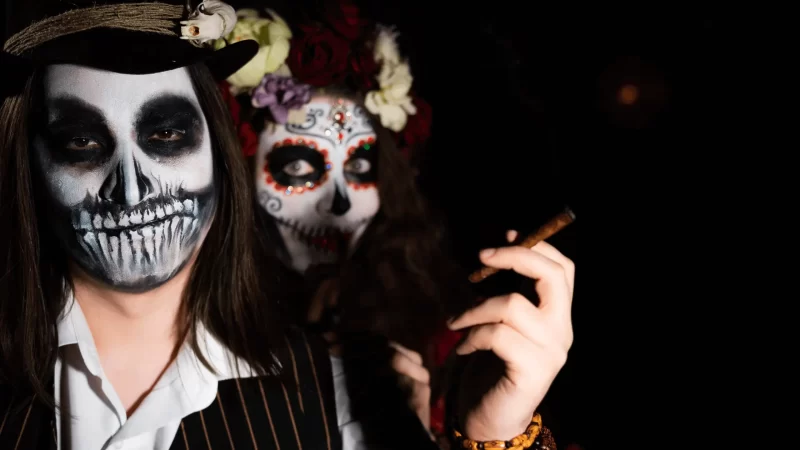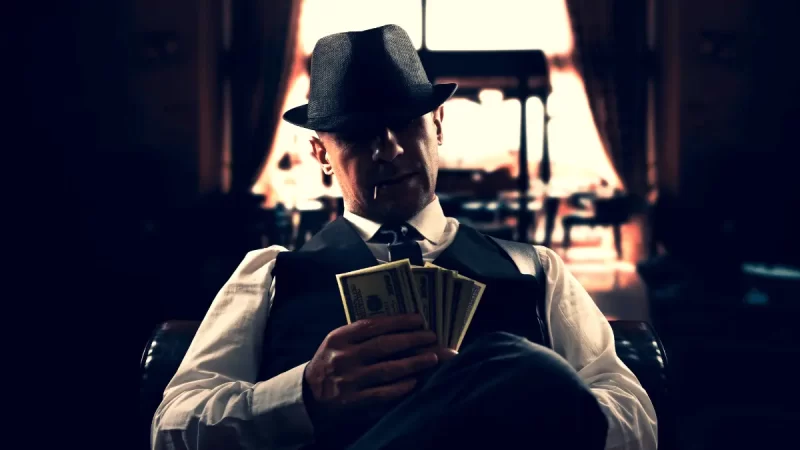The Fascinating and Intriguing True Stories of Narco Saints
In the shadowy world of drug cartels and criminal empires, a peculiar phenomenon has emerged: the rise of narco saints. These enigmatic figures, often venerated by members of the drug trade, possess an intriguing blend of spirituality, folklore, and criminality. Join us on a gripping journey as we unravel the true stories behind the narco saints, their legends, and the impact they have had on the world.
The Origins of Narco Saints

The origins of narco saints can be traced back to the intertwining of Catholicism and the criminal underworld. In Mexico, where this phenomenon gained significant prominence, the legends often stem from the reverence and devotion to traditional Catholic saints. However, a distinct twist emerges, with narco saints being associated with protection and favor in the illegal drug trade.
In a society rife with violence and danger, individuals involved in the drug trade sought solace and protection. The narco saints became the conduits for their hopes and prayers, bridging the gap between the spiritual and the criminal realms. This fusion of faith and criminality gave rise to the narco saint culture, a unique phenomenon that continues to captivate and perplex observers worldwide.
Santa Muerte – The Skeleton Saint

One of the most famous narco saints is Santa Muerte, also known as the Holy Death or the Skeleton Saint. Santa Muerte’s imagery, with her skeletal figure draped in vibrant robes, has captivated the imagination of many. Devotees of Santa Muerte believe in her ability to provide protection, luck, and even aid in criminal activities.
Santa Muerte’s popularity surged among those involved in the drug trade, who sought her assistance in navigating the perilous paths of their illicit activities. Despite the Catholic Church’s disapproval of Santa Muerte and its attempt to distance itself from this controversial figure, her following continues to grow.
The legends surrounding Santa Muerte tell tales of miraculous interventions, with believers attributing their narrow escapes, successful smuggling operations, and survival in dangerous situations to her divine intercession. The narco culture has embraced Santa Muerte as a patroness, weaving her into their narratives and rituals, further solidifying her position as a prominent narco saint.
Jesús Malverde – The Robin Hood of the Narcos

Jesús Malverde, hailed as the patron saint of drug traffickers, is another captivating narco saint. Born in Sinaloa, Mexico, in the late 19th century, Malverde is revered as a modern-day Robin Hood figure, robbing from the rich and giving to the poor.
According to the legends, Jesús Malverde was a bandit who stole from the wealthy to assist the impoverished communities in his region. His selfless acts and his eventual capture and execution by authorities elevated him to a legendary status, transforming him into a symbol of resistance and justice.
Within the narco culture, Malverde is seen as a protector and a provider of good fortune. His veneration goes beyond the realms of spirituality, with drug traffickers and their associates considering him a guardian angel in their dangerous undertakings. The tales of his interventions and miracles have solidified his place among the narco saints, with his shrine in Sinaloa attracting countless devotees seeking his aid.
The Legend of San Nazario – The Narco Priest

San Nazario, known as the Narco Priest, has a unique place among the narco saints. His story intertwines the worlds of religion and crime in a profound way. San Nazario was a former drug traff
icker who turned to the priesthood after experiencing a spiritual awakening.
Nazario’s journey from a life of crime to one of redemption and devotion is a remarkable tale. His transformation captured the attention of many, and he became a symbol of hope for those seeking redemption within the drug trade. Despite facing resistance and skepticism from both the Catholic Church and the criminal underworld, San Nazario embraced his role as a spiritual guide for those trapped in the cycle of violence and illegal activities.
San Nazario’s ministry focused on providing spiritual guidance, counseling, and support to individuals involved in the drug trade. His compassion and understanding, stemming from his own experiences, allowed him to connect with those who felt marginalized and rejected by society. While controversial, San Nazario’s presence offered a glimmer of hope and the potential for change within the narco community.
Narco Saints in Popular Culture

The allure of narco saints extends beyond their religious significance, seeping into popular culture. From movies and television shows to music and art, the narco saint phenomenon has left an indelible mark. The narco culture, with its rich mythology and intriguing figures, has become a source of inspiration for storytellers, artists, and performers.
The rise of popular series such as “Narcos” and “El Chapo” has shed light on the narco saint culture, captivating audiences worldwide. These shows explore the complex dynamics between the drug trade and spirituality, painting a vivid picture of the narco saints and their influence. The gritty realism and the compelling narratives have brought the stories of narco saints to the mainstream, making them a subject of fascination and intrigue.
Furthermore, the narco culture has permeated the music industry, with narco corridos (drug ballads) gaining popularity. These songs tell the tales of narco saints, drug lords, and the realities of the criminal underworld. Through the power of music, the narco culture finds a voice, allowing its stories to be shared and celebrated.
The Controversy Surrounding Narco Saints

While narco saints have amassed a significant following, their veneration remains highly controversial. Critics argue that glorifying criminals and engaging in illicit activities under the guise of religious devotion is deeply problematic. The association of spirituality with criminality raises ethical dilemmas and societal implications that cannot be ignored.
The Catholic Church, in particular, has expressed its disapproval of the narco saint culture. The Church sees the veneration of narco saints as a distortion of Catholic beliefs and teachings, urging its followers to steer clear of these practices. The intertwining of criminality and spirituality not only challenges the moral fabric of society but also presents a dilemma for those seeking a genuine connection with the divine.
Additionally, the glorification of narco saints in popular culture has sparked debates regarding the ethics of portraying criminal figures as heroes or antiheroes. While these narratives offer a glimpse into the complexities of the narco culture, they also risk romanticizing and glamorizing criminal behavior.
Conclusion:
The world of narco saints is a fascinating realm where spirituality and criminality collide. The true stories behind these enigmatic figures are captivating and shed light on the intricate tapestry of human belief systems. The narco saint phenomenon represents a unique fusion of faith, folklore, and criminality, challenging traditional notions of devotion and morality.
As we conclude this journey through the dark legends of narco saints, we must reflect on the complexities and moral implications that arise when spirituality intertwines with the world of crime. The narco saint phenomenon remains an enduring testament to the human capacity for belief, even in the darkest corners of society.
While the controversies surrounding narco saints persist, their stories continue to captivate and intrigue. They serve as a reminder of the power of legends and the complexities of human nature. Ultimately, it is through understanding and critical examination that we can gain insights into the narco saint culture, allowing us to navigate the intricate web of spirituality, folklore, and criminality that defines their existence.





